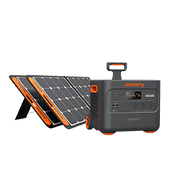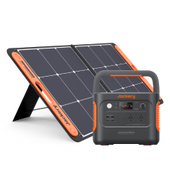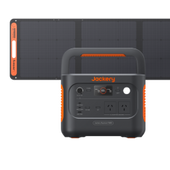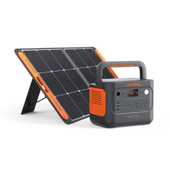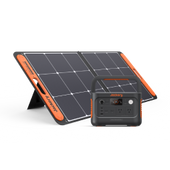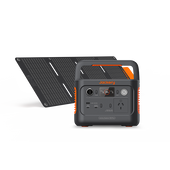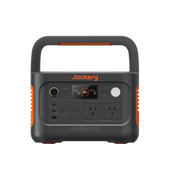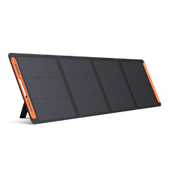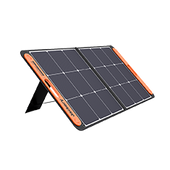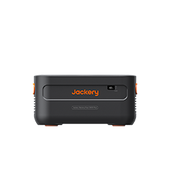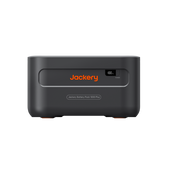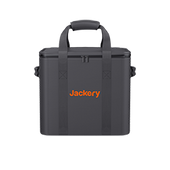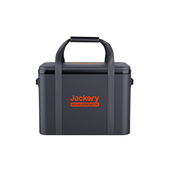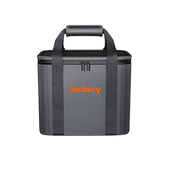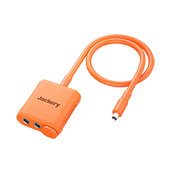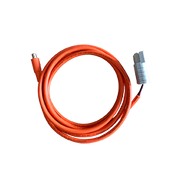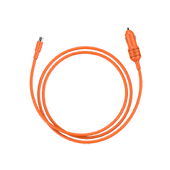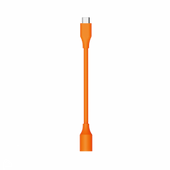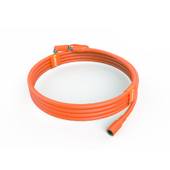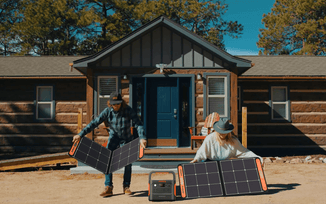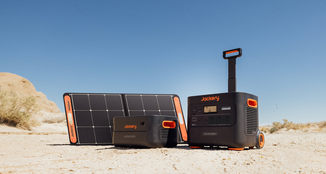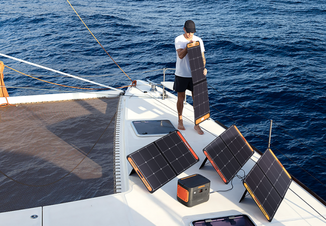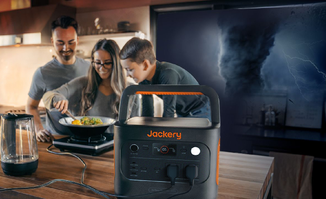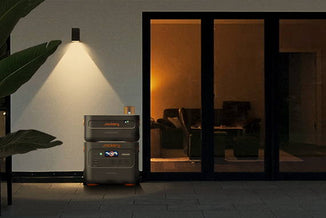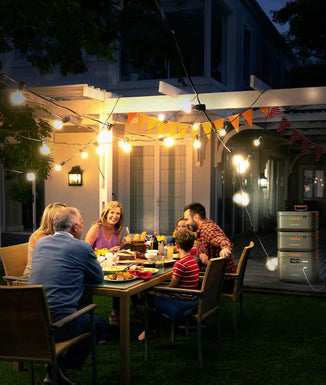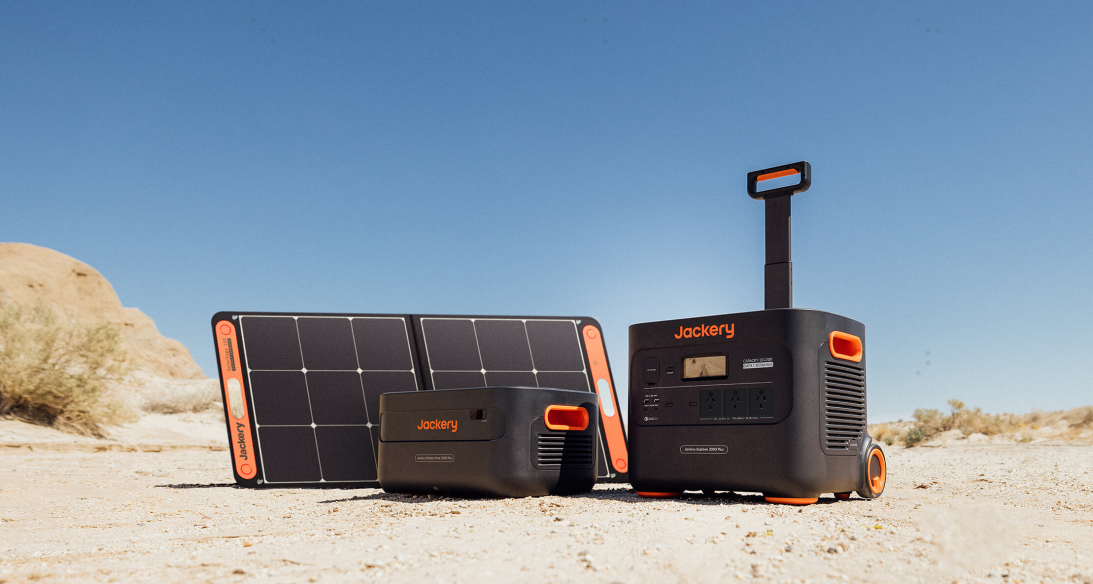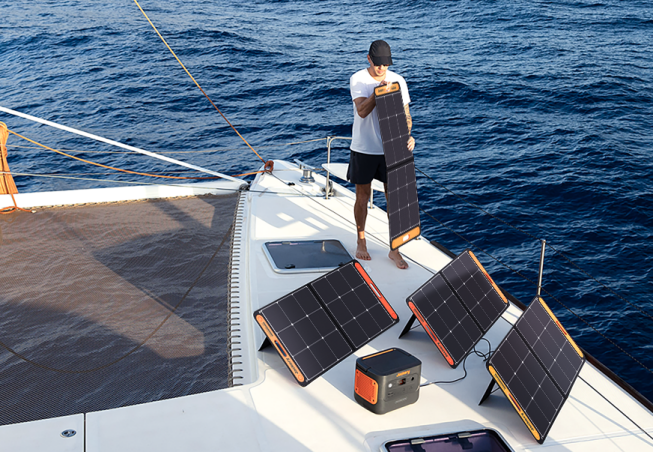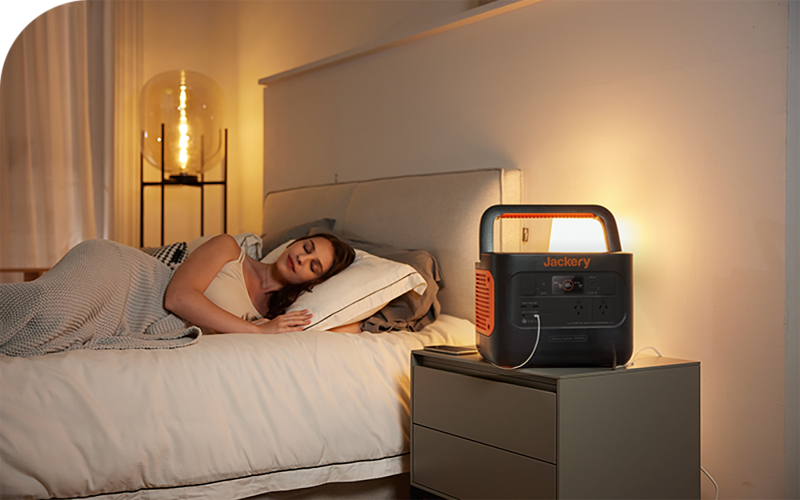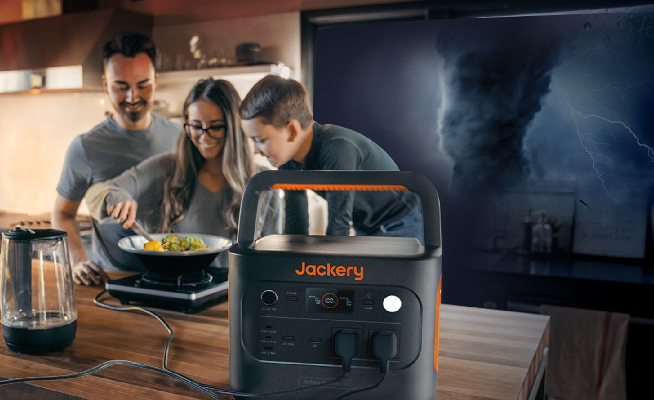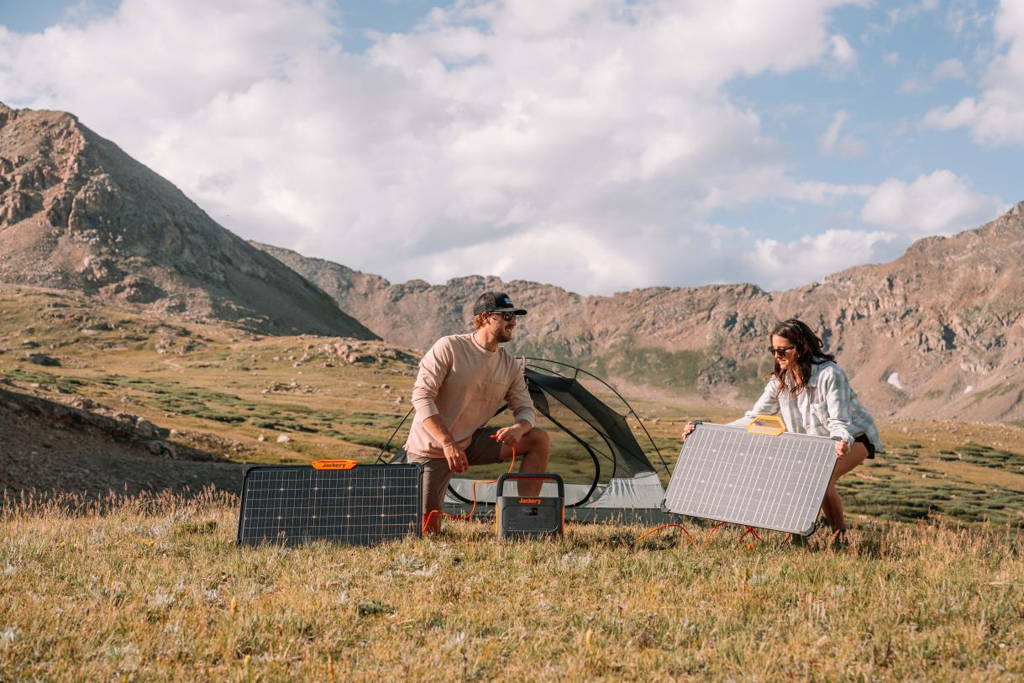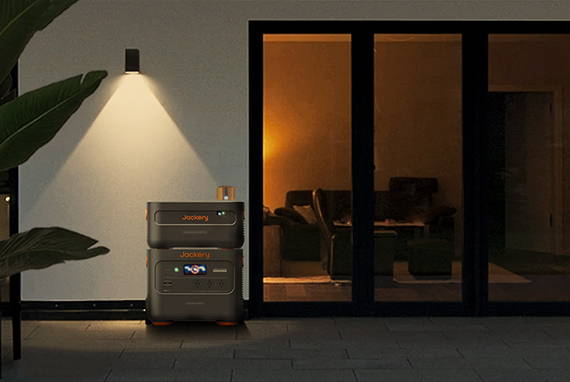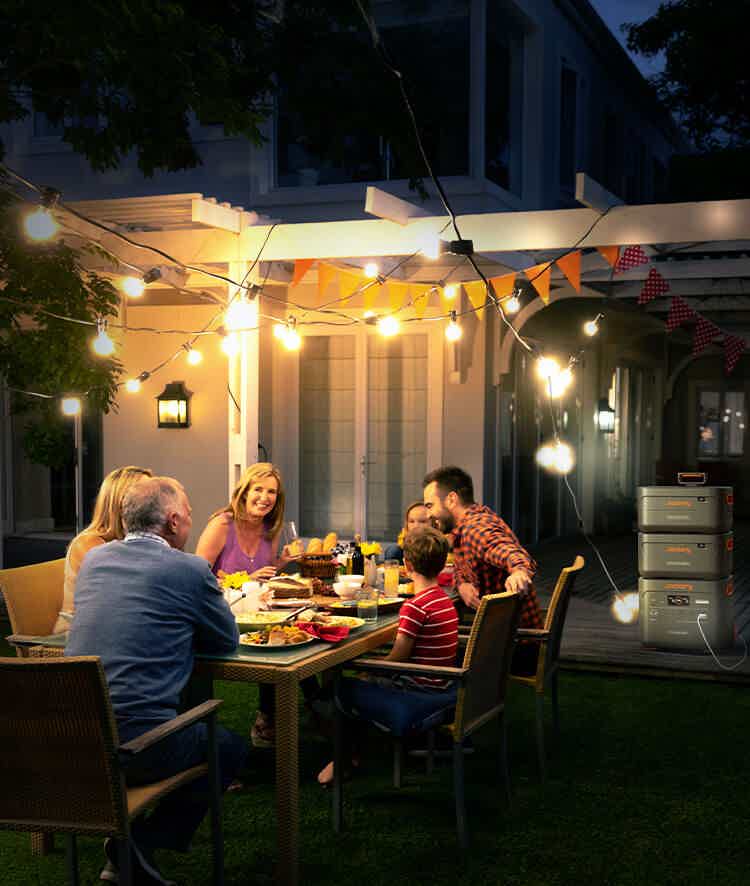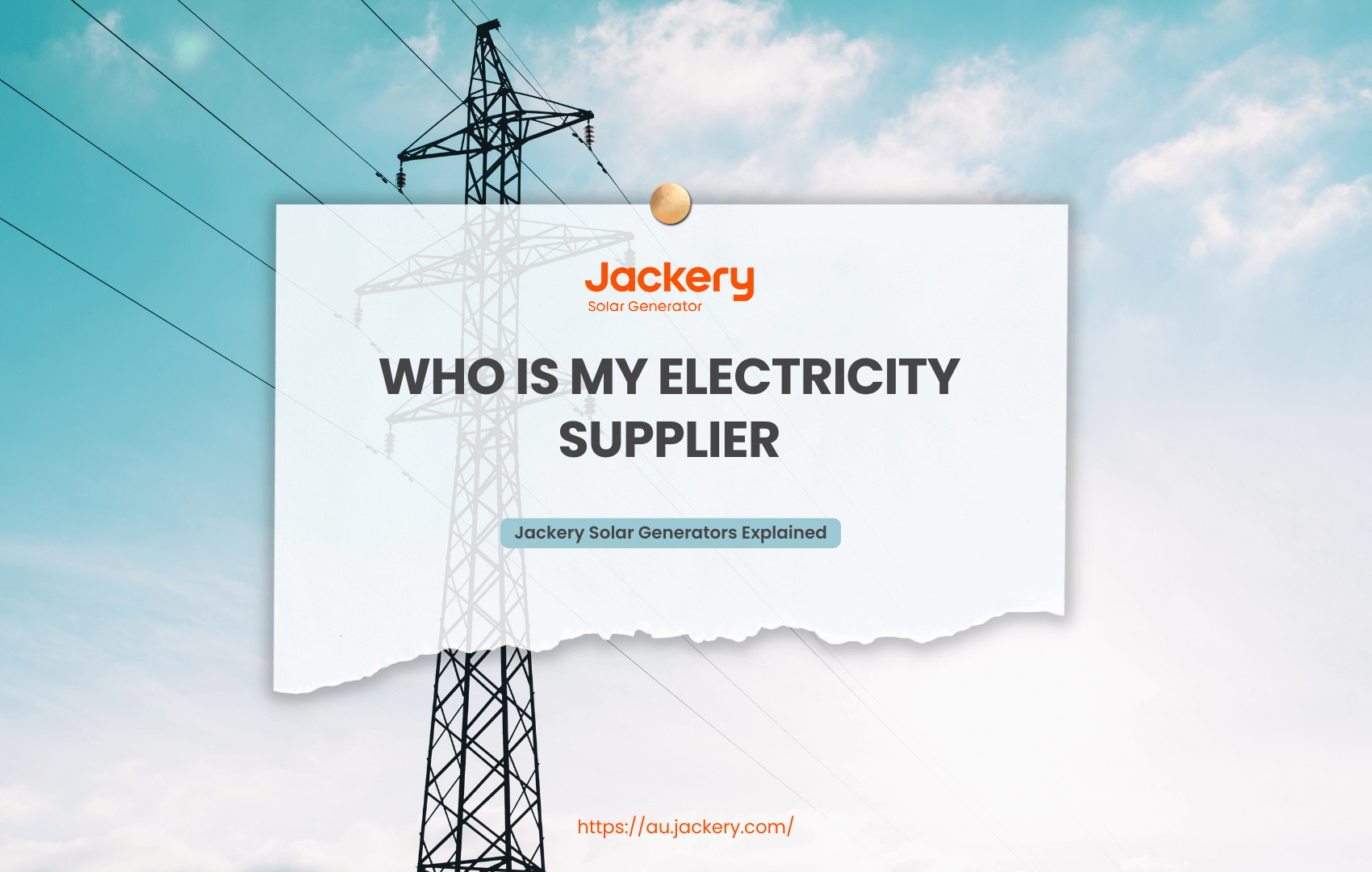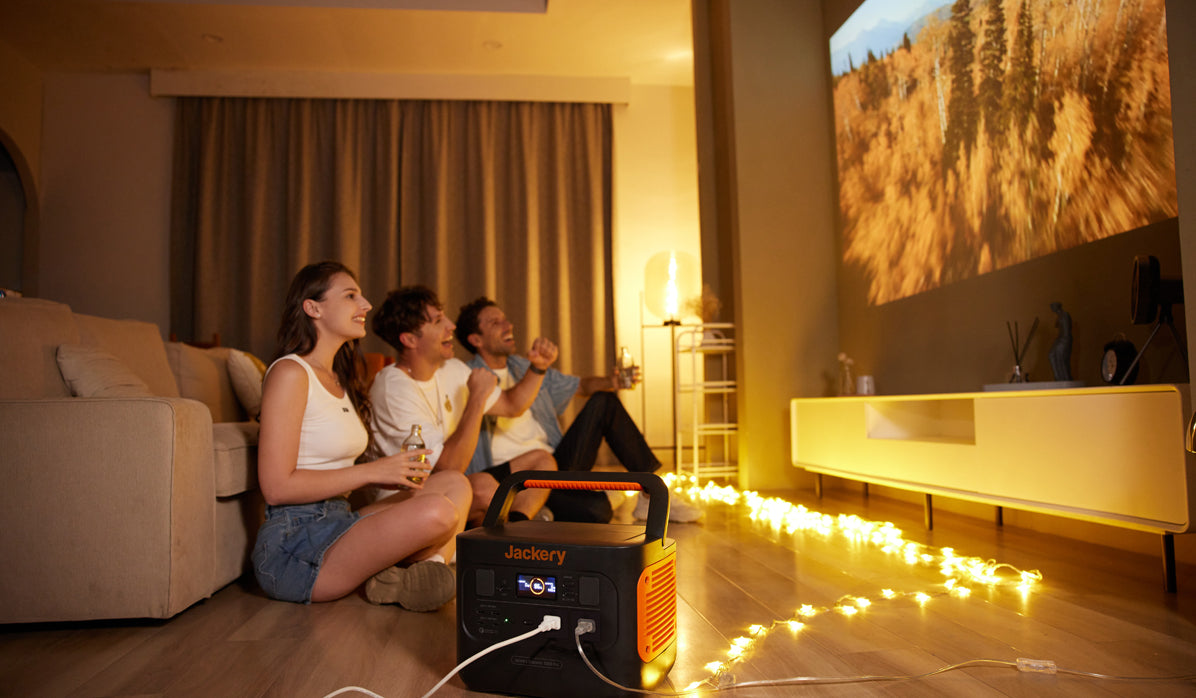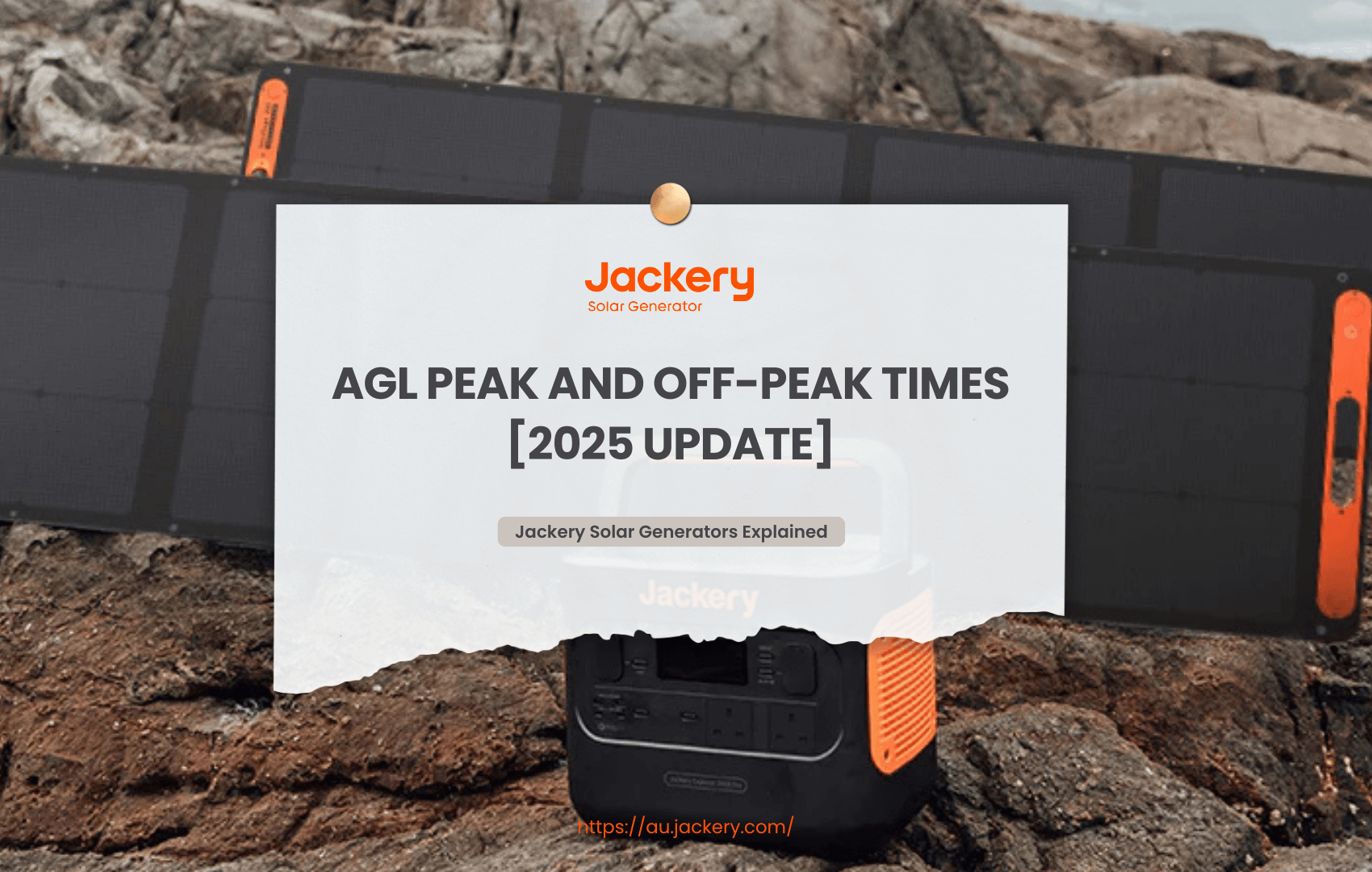|
Key Takeaways: |
|
- Your electricity supplier is the retailer that bills you and manages your electricity plan. - You can find your electricity supplier on your most recent electricity bill. - Understanding your electricity supplier helps you avoid overpaying for outdated energy plans. - If you're unhappy with your supplier, you can switch to using government-endorsed tools. - The energy ombudsman offers free assistance if issues with your supplier go unresolved. - We recommend Jackery Solar Generator 1000 Plus and 1000 v2 to power your household appliances with solar energy to save bills. |
What Is an Electricity Supplier?
Energy retailers, sometimes called electricity suppliers, buy power from the wholesale market and resell it to customers while managing billing and customer support. Energy retailers in Australia compete in a market where customers can select from a range of providers offering different plans and services.
Retailers purchase electricity from wholesale market generators and resell it to homes and businesses. The last connection in the electrical supply chain is the retail industry, which serves as a conduit between merchants and their clientele. Retail markets allow energy retailers to offer gas, electricity, and energy services to both residential and commercial clients.
Thanks largely to the Australian Energy Regulator (AER), customers can choose their energy provider with knowledge. In order to safeguard customers from excessively high costs, the AER is responsible for authorising retailer authorisations and exemptions, monitoring and enforcing adherence to energy retail laws and regulations, and establishing the Default Market Offer. Knowing the function of electricity providers enables customers to evaluate offers, navigate the energy market, and choose the best plan for their requirements.
What's the Difference Between a Supplier and a Distributor?
In Australia, the distinction between an electricity distributor and an electrical provider (supplier) is found in their respective functions within the energy supply chain. A supplier, sometimes known as an electricity supplier, is the business from which you decide to purchase electricity. They take care of your electricity plan, send you bills, help you with customer service, and sometimes they have special offers. The wholesale market is where retailers buy electricity to resell to homes and businesses. EnergyAustralia, Origin Energy, and AGL are a few examples.
In contrast, the physical supply of electricity is the responsibility of an electricity distributor. They own and maintain the substations, transformers, wires, and poles that transport power from the transmission system to your property. Your area chooses your distributor; you cannot select them. Powercor (VIC), Energex (QLD), and Ausgrid (NSW) are a few examples.
In short:
The supplier manages your account and sells you electricity.
The distributor ensures the electricity physically reaches your property.

Common Electricity Suppliers by States in Australia
Australia's energy market offers a wide variety of suppliers depending on the state and territory. A number of regional providers serve particular regions, while major shops operate on a nationwide scale. You may make more informed judgments about your electricity needs if you know the suppliers available in your area.
New South Wales (NSW)
Residents in NSW have access to a variety of electricity retailers. Some of the prominent suppliers include:
AGL
Origin Energy
EnergyAustralia
Red Energy
Powershop
Alinta Energy
Momentum Energy
Engie (formerly Simply Energy)
Victoria (VIC)
Victoria's competitive electricity market features numerous suppliers. Key retailers in the state are:
AGL
Origin Energy
EnergyAustralia
Red Energy
Powershop
Alinta Energy
Momentum Energy
Engie
Queensland (QLD)
In Queensland, electricity retailers vary between regions:
South East Queensland (including Brisbane, Gold Coast, and Sunshine Coast):
AGL
Origin Energy
EnergyAustralia
Red Energy
Alinta Energy
Powershop
Engie
Regional Queensland:
Ergon Energy (government-owned and the primary retailer in regional areas)
South Australia (SA)
South Australians can choose from several electricity retailers, including:
AGL
Origin Energy
EnergyAustralia
Alinta Energy
Red Energy
Powershop
Engie
Tasmania (TAS)
Tasmania's electricity market is more limited, with fewer retailers:
Aurora Energy (state-owned and the primary retailer)
1st Energy (a newer entrant offering alternative plans)
Australian Capital Territory (ACT)
In the ACT, residents have access to several electricity retailers:
ActewAGL (a joint venture between AGL and the ACT government)
Origin Energy
EnergyAustralia
Red Energy
Powershop
Western Australia (WA)
Western Australia's electricity market is regulated, with limited retailer options:
Synergy (state-owned and serves the South West Interconnected System, including Perth)
Horizon Power (state-owned and serves regional and remote areas)
Northern Territory (NT)
The NT's electricity market is also regulated, with primary retailers being:
Jacana Energy (government-owned and serves most residential customers)
Rimfire Energy (a smaller retailer offering alternative plans)
How Do You Find Out Who Your Electricity Supplier Is?
You're not alone if you don't know who provides the electricity for your house or place of business. Many Australians could want assistance locating their electricity provider, particularly those who have recently relocated or are in charge of rental properties. With the help of your account, internet resources, or local distributor details, you can thankfully identify your energy retailer in a few easy steps.

Step 1: Check Your Electricity Bill
Examining your most current electricity bill is the easiest way. Your electricity retailer's name and contact information—the business that supplies you with electricity and oversees your account—will appear on your bill. The local energy provider needs to send you a welcome letter if you recently moved into a new residence. Consider asking the person who pays the bill or the property management for the supplier's information if you don't receive a bill or welcome letter.
Step 2: Contact Your Electricity Distributor
You can get in touch with your electricity distributor if you can't identify your supplier from the bill or other sources. Distributors can give you details on the retailer connected to your address and are in charge of maintaining the electrical infrastructure. You can locate your distributor using resources offered by government websites or energy firms.
Step 3: Use Online Tools and Resources
There are a number of websites that might assist you in locating your electricity supplier:
Energy Made Easy: This government website offers information about energy distributors and retailers, including their contact details.
Origin Energy's Distributor Lookup: Enter your postcode to find your electricity distributor, which can then guide you to your retailer.
EnergyAustralia's Distributor Finder: Similar to Origin’s tool, it helps you identify your distributor based on your location.
Why Does Knowing Your Electricity Supplier Matter?
The quality of your service, the amount of money you spend on energy, and your overall level of satisfaction can all be considerably impacted by your knowledge of your electricity supplier. This information is essential for the following reasons:

Manage Your Bills and Account Effectively
Billing, customer service, and energy plan management are the responsibilities of your power supplier, often known as your retailer. Knowing who to contact for billing questions, account changes, or service concerns is certain when you are familiar with your supplier. Retailers manage the intricacies of energy procurement and pricing by buying power from wholesale markets and reselling it to customers.
Avoid Overpaying for Electricity
Knowing your current electricity provider enables you to evaluate your current plan against other available options. Many Australians are still on antiquated plans, which may cost them more than they need to. More than 80% of households would benefit from examining their energy plans to make sure they are not paying greater premiums than necessary, according to the Australian Competition and Consumer Commission (ACCC).
Simplify the Switching Process
Finding out who your current electricity provider is is the first thing you should do if you are thinking about switching your electricity plan or supplier. This information enables you to investigate several alternative possibilities and to make judgments based on accurate information.
Access Consumer Protections and Support
You can obtain the proper consumer protection and support services if you are aware of your power provider. Retailers have a duty to help consumers who are having trouble making payments; this may involve extending the due dates on bills, providing payment plans, or forgoing late fees. Knowing your source enables you to get help quickly when you need it.
Know Whom to Contact for Issues
Knowing your electricity distributor is crucial in case of emergencies or power outages because they are responsible for maintaining the physical infrastructure that supplies electricity to your home. Still, your electricity supplier is the right person to contact for billing questions, plan inquiries, or account management. Knowing the difference guarantees that you contact the right person for specific concerns.
What to Do If You're Not Happy With Your Electricity Supplier?
Suppose you're dissatisfied with your current energy provider in Australia. In that case, whether it's due to poor customer service, billing issues, or a plan that doesn't work for you, there are specific steps you can take to fix the issue and possibly switch to a better one.
By following these steps, you can resolve problems with your present electricity supplier and make well-informed decisions on your energy requirements. Keep in mind that you have the right to equitable treatment and that you have access to services to help you address any issues.

Step 1: Contact Your Electricity Supplier
Start by speaking with your electricity supplier about your issues. Clearly state the problem and the desired solution. It's best to document every correspondence, including dates, the names of the representatives you interacted with, and discussion summaries. If the first response is inadequate, ask to have the issue escalated to a management or senior employee. By recording your conversations, you can be sure that your attempts to fix the problem are traced back.
Step 2: Escalate to the Energy Ombudsman
You can take your issue to the energy ombudsman in your state or territory if it hasn't been addressed after speaking with your supplier. The ombudsman offers energy users a free, impartial dispute resolution service. They are able to look into complaints about service problems, billing conflicts, and other matters. Usually, your energy bill or the ombudsman's official website will have the contact information for your local energy ombudsman.
Step 3: Compare and Switch Energy Plans
Utilise comparison tools that have been approved by the government in order to learn about the various energy plans that are offered in your region if you are thinking about switching your electricity provider.
Step 4: Understand Your Rights as an Energy Consumer
Suppose you are a consumer of energy in Australia. In that case, you are protected by the National Energy Customer Framework (NECF) in the majority of the states and territories for your energy consumption. It is important that you become familiar with these rights so that you can ensure that you are treated fairly and have the ability to speak for yourself effectively.
How to Change Electricity Providers
The procedure of switching electricity suppliers is simple and can result in significant cost savings and improved service. Successful navigation of the switch can be accomplished as follows:

Step 1: Review Your Current Plan
To learn about your rates, use trends, contract conditions, and any relevant exit costs, start by looking at your most recent power bill. You can accurately compare new plans with the use of this information.
Step 2: Compare Available Plans
To investigate the various electricity plans offered in your area, use government-approved comparison tools such as Victorian Energy Compare or Energy Made Easy. These platforms let you enter your preferences and usage information to identify solutions that work for you.
Step 3: Select a New Provider
Choose a plan that best suits your needs after comparing; take into account elements like price, renewable energy options, and customer service ratings. You can register with the new provider over the phone or online.
Step 4: Initiate the Switch
The transfer will be managed by your new provider, who will also notify your existing provider. Throughout this operation, your electrical supply shouldn't be interrupted.
Step 5: Cooling-Off Period
After registering with a new provider, Australia usually has a 10-business-day cooling-off period. If you decide to change your mind during this time, you can cancel the switch without incurring any penalties.
Additional Tips:
Check for Exit Fees: There may be early termination fees associated with some contracts. Examine your existing contract to prevent unforeseen fees.
Understand Your Usage: Knowing your electricity consumption might be aided by selecting a plan that provides the best value for your usage patterns.
Regularly Compare Plans: Plans and prices for electricity are subject to change. You can make sure you're always on a competitive plan by periodically examining and comparing your options.
Jackery Solar Generators for Saving Electric Bills
After knowing who is your electricity supplier, you may wonder how to save the electric bills. We highly recommend you consider having a solar generator to save your bills by using solar energy—free and unlimited renewable power.
A solar generator saves electricity by using free sunlight to make power. This means you don't have to buy electricity from the grid, which lowers your energy bills over time. You're not paying for fuel because you're using the sun's energy instead, which makes it a cheaper option in the long run, even if it costs more to buy at first.
If you want to attempt solar energy but have a limited budget, consider purchasing a solar generator first. We highly recommend the Jackery Solar Generator, which combines Jackery Solar Panels with a Portable Power Station to maximise solar energy utilisation. Consider using Jackery Solar Generators to augment your power demands rather than depending entirely on the grid. These portable devices offer an economical and environmentally responsible means of powering your household appliances.
Jackery Solar Generator 1000 Plus
Discover the strength and adaptability of the Jackery Solar Generator 1000 Plus, which is designed to boost your energy independence and help you save money on your electricity bills. The Jackery Solar Generator 1000 Plus combines a Jackery SolarSaga 100W or 200W solar panel and an Explorer 1000 Plus. This portable generator's incredible 2000W output and strong 1264Wh capacity power 99% of equipment makes saving household utility electricity easy.

(*The working hours are only for reference; the actual working hours depend on your usage.)
Jackery Explorer 1000 Plus Portable Power Station:
Like the Explorer 2000 Plus, it has expandable capacity. Because of its expandable architecture, you may connect up to three additional battery packs, bringing the total capacity to an amazing 5kWh, enough for one to three days of backup power at home. To utilise Solar Generator 1000 Plus, simply connect Explorer 1000 Plus to a SolarSaga solar panel.
1.25 kWh: Charging some small appliances in tiny houses or off-grid cabins.
5 kWh: Powering low-to-high appliances, even the iron, electric oven, and dryer.
Recharging Explorer 1000 Plus is also simple. SolarSaga 100W can be recharged in 18 hours, and SolarSaga 200W in 9 hours. You can also recharge it using wall outlets (1.7 hours) and a carport (14.5 hours). Its LiFePO4 battery cells are long-lasting, with 4,000 charge cycles and ten years of reliable performance.
Take control with the Jackery App, which offers real-time monitoring and customisation via WiFi or Bluetooth. The Jackery 1000 Plus is tiny, efficient, and built to last, with a 3+2 year warranty to provide peace of mind as you implement sustainable energy solutions.
Jackery SolarSaga 100W Solar Panel:
Jackery SolarSaga 100W Solar Panel transforms solar energy into renewable power with this monocrystalline solar panel! Boasting a solar conversion efficiency of 23.7%, it is optimally designed for home backup and unforeseen power interruptions. The ETFE-laminated casing prolongs the solar panel's lifespan and weighs 4.69 kg. It is lightweight, foldable, IP65 waterproof, and convenient for transport.
Jackery Solar Generator 1000 v2
The Explorer 1000 v2 portable power station and SolarSaga 100W or 200W solar panels pair up to make the Jackery Solar Generator 1000 v2. The Jackery Explorer 1000 v2 is more than just a power station; it's your go-to energy partner for life's biggest adventures thanks to its powerful 1500W AC output, state-of-the-art LiFePO4 battery technology, and three quick recharge options.

(*The working hours are only for reference; the actual working hours depend on your usage.)
Jackery Explorer 1000 v2 Portable Power Station:
The Explorer 1000 v2 portable power station provides an impressive 1500W output, which is 50% greater than earlier models. It can seamlessly operate high-power appliances, including refrigerators, kettles, and portable air conditioners, rendering it the ideal solution for your power requirements.
It is engineered for mobile energy solutions. Weighing about 23.8 lbs and equipped with a compact foldable handle, it is more lightweight and portable than conventional items. Besides, it is 20% smaller and 10% lighter than mainstream products.
Function at a library-quiet level of less than 22 dB, devoid of disruptive noise, solely exhibiting pure energy. In contrast to gas generators, the Jackery Explorer 1000 v2 generates no emissions, protecting your health and the environment. It is perfect for home use.
Achieve unparalleled safety with the Jackery 1000 v2 Portable Power Station. Equipped with enhanced ChargeShield 2.0 technology, it provides several charging modes, including rapid charging, emergency supercharging, and silent charging.
Jackery SolarSaga 200W Solar Panel:
The Jackery SolarSaga 200W Solar Panel boasts a solar conversion efficiency of up to 25%, facilitating rapid adoption of eco-friendly energy solutions. The ETFE-laminated casing prolongs its durability, and the suggested angle guarantees optimal sunlight absorption, rendering it an ideal power source for home backup. It is portable, collapsable, and may be immediately connected to a power station for an optimal solar power system.
FAQs
The following are the frequently asked questions about finding my electricity supplier in Australia.
1. How do I find out who my electricity supplier is in Australia?
Check the most recent generation of your electricity bill, which should include the name of the retailer, in order to determine who your electricity provider is. In the event that you do not have a bill, you can acquire information about your supplier by contacting your power distributor or by utilising internet tools such as Energy Made Easy.
2. Who is my electricity authority?
The Australian Energy Regulator (AER), which is responsible for monitoring energy markets and ensuring compliance with rules, is the institution that oversees your consumption of electricity. Resources are made available by the AER to assist customers in comprehending the rights and obligations that pertain to them.
3. Who provides electricity in NSW?
In New South Wales, energy distribution is handled by several different retailers, such as AGL, Origin Energy, and EnergyAustralia. Your location and your chosen plan will determine the provider you work with.
4. Who is the grid operator in NSW?
In NSW, the National Electricity Market is supervised by the Australian Energy Market Operator (AEMO), which also maintains a steady electricity supply.
5. How do I know who provides electricity in my area?
You can use the Energy Made Easy website to identify local electricity providers. You may explore and compare the shops and electricity plans that are available in your area by entering your postcode.
Final Thoughts
To have control over your energy choices and expenses, it is important to be aware of who your electricity supplier is. This is not only about invoicing. Comparing different plans, easily switching providers, and finding solutions to problems more quickly are all possible when you have the appropriate information. Making more informed choices regarding your energy use is possible if you better grasp your supplier and distributor's roles. This is true whether you are seeking a better bargain or need assistance with your account.

